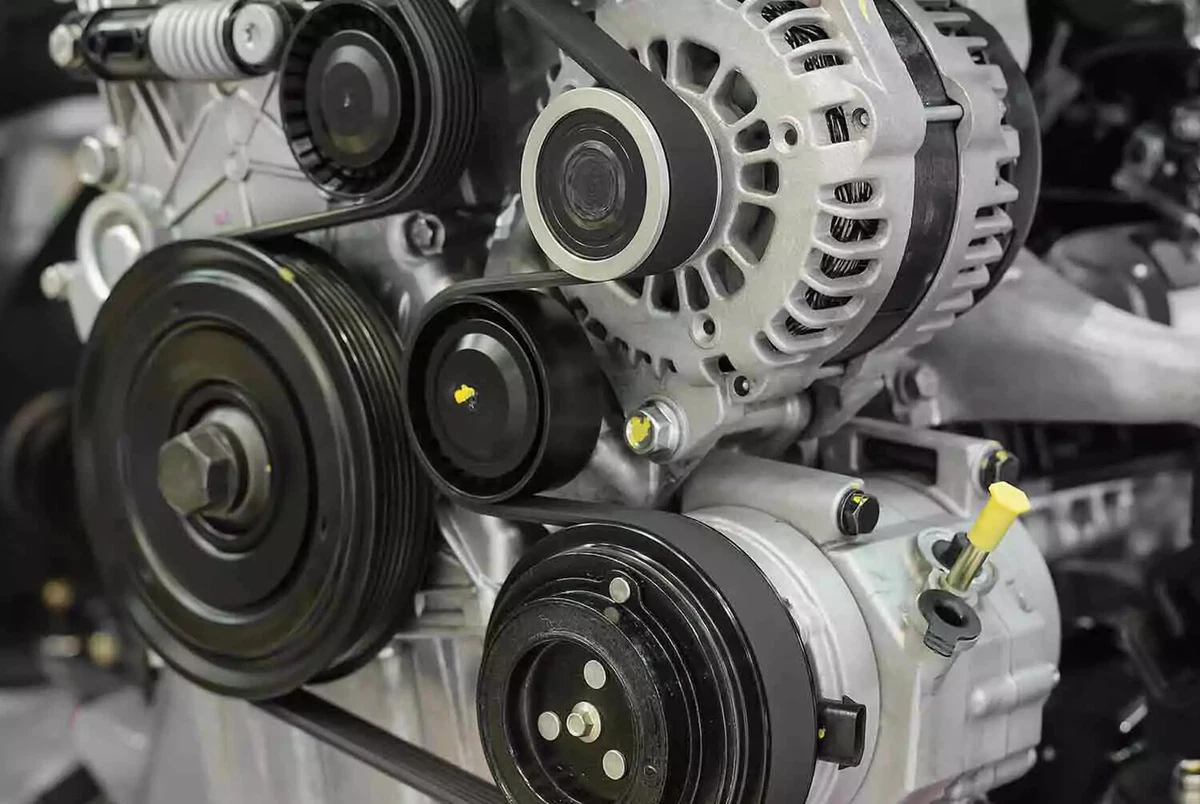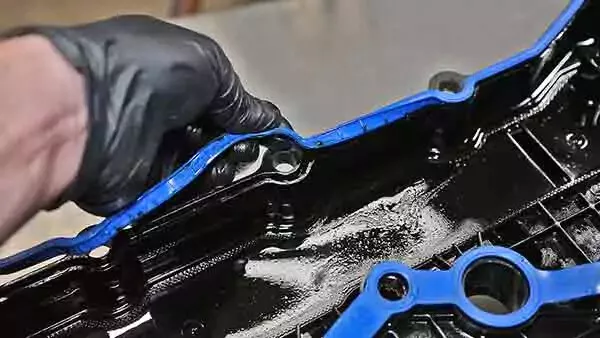The Drive Belt Runs Your Pumps and Accessories

The serpentine belt slithers its way around all of the engine’s external pulleys.
In older vehicles, engines use multiple belts (such as the V-belts), each to control a different function. For modern designs, a single drive belt handles all these various jobs. It’s also known as the accessory belt or serpentine belt.
This belt takes the mechanical energy provided by the crankshaft and transfers it to power various accessories. It’s necessary for systems such as the power steering pump, AC compressor, alternator, and sometimes the water pump to keep everything operating smoothly while the engine is running.
For all of the responsibilities the drive belt has, there are warning signs that something is wrong. Pay attention to what it may be trying to tell you.
When it comes time to replace it, go to the eBay Parts Finder - opens in new window or tab.. Enter your year, make, model, engine, and trim to search for drive belts that match your vehicle.
Why is it also called a “serpentine” belt?
This single belt snakes around the various pulleys, which explains the name. It rides on the pulleys on the front of the engine, so it’s usually near the front of the vehicle. If you have a front-wheel-drive car or an all-wheel-drive crossover, you likely have an engine mounted sideways. It sits left to right not front to back, like on a truck. On these transversely mounted engines, you can find the serpentine belt on the side.
Your Drive Belt Should Get Regular Checks

Preventive maintenance is best. If you replace a worn drive belt before it fails, you won’t get stuck on the side of the road.
The majority of drive belts last between 50,000 and 100,000 miles, although the time depends on how much it is used and the quality of the belt. We recommend inspecting the belt regularly and replace it at the first sign of wear. If you’ve had the same belt on for 10 years, replace it now as a precaution.
Regular inspection and proper tensioning ensure the drive belt continues to run smoothly. Because of all the critical components powered by the serpentine belt, you don’t want it to break or wear out. If it fails, it can lead to the loss of power steering, air conditioning failure, and possibly engine overheating.
Furthermore, if the belt breaks while driving, it can damage other essential components, leading to expensive repairs. Because the belts can snap unexpectedly, it’s far better to catch wear early on and replace it before bigger problems occur.
Spotting Symptoms of a Bad Drive Belt

This drive belt is dried-out and cracked. It should be replaced immediately.
Most of the signs indicating that a drive belt is going bad can be caught by a visual inspection. Cracks start to appear along the ribs as the belt degrades. If there are cracks, you need to replace the belt immediately because it may fail at any time. Sections of the rib tear away. Delamination and peeling are other signs of upcoming failure.
You may also notice frayed edges or chunks of rubber missing. While the belt needs to be replaced, also look at the pulley alignment. Inspect the brackets and pulleys to ensure there’s no underlying cause of the damage.
A serpentine belt in good working order is uniform in color and dull-looking. If any part of the belt looks glazed, something is causing the belt to rub. Something is misaligned. The misalignment needs to be repaired and the belt needs to be replaced.
Does a failing drive belt always make a sound?
No. When the belt starts to fail, it can be relatively quiet, which is why regular inspection is critical. Depending on how the belt is worn, it could also make a high-pitch squealing, screeching, or chirping. If the belt becomes loose or breaks, it can cause a slapping or thumping sound. If you hear that kind of noise, pull over immediately.
Can you drive with a bad drive belt?
If you hear the belt making a noise and you inspect it but find no crazy signs of damage, you may be able to drive for a short time before replacement is necessary. Just keep in mind that the lifespan is completely unpredictable, and failure could occur at any time. Of course, if the belt is slipping or loose, you shouldn’t stop driving and replace it.
Replacing Your Drive Belt

Drive belt replacement is a straightforward DIY task.
To replace the drive belt - opens in new window or tab., you may need an hour or less. With most vehicles, the job is straightforward. It can be slightly more difficult with a transverse engine simply because the belt is closer to the subframe, so it’s more challenging to reach. Because the toughest part of any belt replacement is releasing the tensioner, it may be helpful if a buddy holds the tensioner while you route the belt.
You’ll also want a long-reach wrench or specialty tool to release the tensioner pulley on some cars. Depending on the model, you may find a belt tensioner tool kit that contains the most common size open-end wrench fitting and square-drive ends for the job.
How much does it cost to replace a drive belt?
Expect to spend about $30 to $80 on a new serpentine belt, depending on your vehicle model. Most drive belt replacements take less than an hour. You can save some money on labor costs by doing the job yourself.
Because damage to the pulleys or tensioner can lead to wear of the drive belt, you may need to buy these parts at the same time. With the belt off, you are one step closer to replacing the alternator, power steering pump, or water pump (if belt-driven). The same is true if you are replacing one of these parts and the belt is old or worn. It probably makes sense to replace it at the same time.
Share your feedback
This article is meant to provide general guidance only. Automotive maintenance, repair, upgrade, and installation may depend on vehicle-specifics such as make and model. Always consult your owner's manual, repair guide for specific information for your particular vehicle and consider a licensed auto-care professional's help as well, particularly for advance repairs.




























































